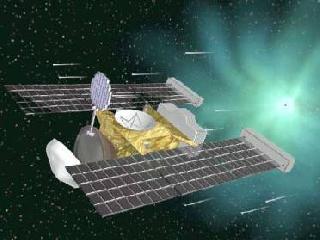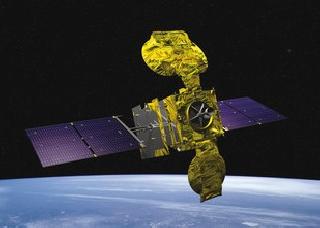
An artist's illustration of Stardust spacecraft. A NASA photo
PASADENA (BNS): After over 11 long years of space voyage and unraveling the mysteries of two distant comets, NASA’s Stardust spacecraft officially ended its operations last week.
The spacecraft, launched on February 7, 1999, to first explore the comet Wild 2 and return particle samples to Earth and then re-launched again to fly past comet Tempel 1, successfully achieved both the objectives before ending operations.
The spacecraft sent its last transmission to Earth at 7:33 pm EDT (2333 GMT) on March 24, shortly after depleting fuel and ceasing operations, NASA said.
The Stardust team performed the burn to depletion, because the comet hunter was literally running on fumes, it said.
The burn to depletion manoeuver was designed to fire Stardust’s rockets until insufficient fuel remains to continue, all the while downlinking data on the burn to Earth some 312 million kilometers away.
The $300 million Stardust mission gave scientists their first collection of comet particles gathered in space after it zoomed past the Wild 2 comet in 2004.
During that prime mission, Stardust had flown past an asteroid named Annefrank and traveled halfway to Jupiter to collect the particle samples. The spacecraft returned to Earth's vicinity in 2006 to drop off the sample return capsule eagerly awaited by comet scientists.
As the comet hunter had enough fuel, NASA then decided to re-task the spacecraft to fly past comet Tempel 1 to collect images and other scientific data.
The mission was named Stardust-NExT.
The spacecraft’s rendezvous with Tempel 1 occurred on February 14, 2011. It traveled approximately 13 million miles around the Sun in the weeks after the successful Tempel 1 flyby.
From launch until final rocket engine burn, Stardust travelled approximately 3.54 billion miles, NASA said.
 Previous Article
Previous Article Next Article
Next Article













The Indian Air Force, in its flight trials evaluation report submitted before the Defence Ministry l..
view articleAn insight into the Medium Multi-Role Combat Aircraft competition...
view articleSky enthusiasts can now spot the International Space Station (ISS) commanded by Indian-American astr..
view article